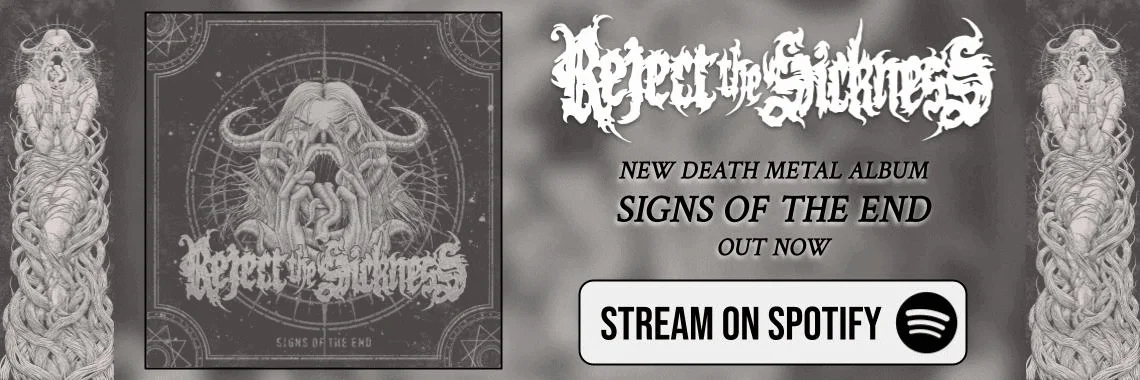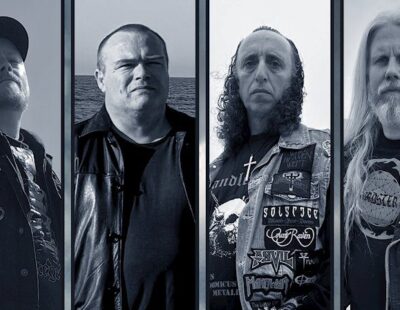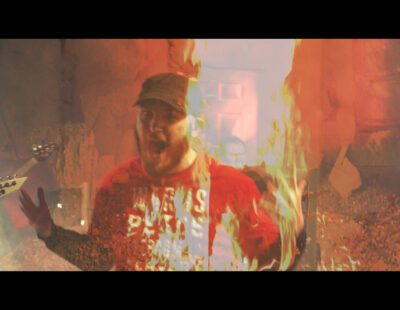** Sólstafir have been roving the plains of Iceland for the better part of two decades. Though originally a black metal act, replete with corpsepaint, the Reykjavikians transformed into something else years later. We’re not entirely sure if Sólstafir are post-metal, post-rock, or post-themselves, but whatever genre of music they fall into, they’re entirely unique. No band, alive or dead, sounds like Sólstafir (even on a bad day). I interviewed e-bow wingnut Aðalbjörn Tryggvason for Decibel #120 (10 years!), but here’s the rest of the piece in good ‘ol Playboy Q&A fashion.
OK, let’s get this one out of the way first. I didn’t know Iceland has cowboys. Are they homegrown or did you import them from New Mexico?
Aðalbjörn Tryggvason: There are certain things that have always been associated with rock ‘n’ roll, tatts, boots, hats, ballads, guitars solos, bourbon whiskey, etc. We somehow have been more naturally drawn to these things than let’s say wearing khaki pants and reverse baseball caps.
On your last tour of the US you met with kids at a Junior High School. How’d that happen? It’s not like Sólstafir is a chart-topping artist in the states.
Aðalbjörn Tryggvason: Our manager’s mom is a school teacher, so while meeting her over lunch in the states this idea came up, and it was great. Some of those kids are from Camden, New Jersey, which is about the most dangerous place in the whole U.S., so they don’t often meet musicians from Europe talking about art and songwriting. It was a privilege having a musical lecture for those kids.
How does Ótta differ from Svartir Sandar?
Aðalbjörn Tryggvason: Well, we finally tried working with a string section, one of those things that we had discussed in the past, and even had some plans for Svartir Sandar, but the idea never made it further. I really wanted to go for softer vocals on this album. I don’t think more aggressive vocals would have fit this album. Apart from that it’s not really that different. We just made another album.
Were the songwriting sessions different from that of previous releases? I hear you often jam out the songs together instead of writing them individually.
Aðalbjörn Tryggvason: Yes, sometimes we have a song that lasts for 10 minutes consisting of one riff, more like few chords. We are not a very riff-oriented band. Then, of course, we add layers and edit here and there. It’s sorta written blindfolded. One day Sæþór [Maríus Sæþórsson] came up with this hook that we all know has to be played on a banjo, but it wasn’t played on a banjo until it was recorded. I drop my guitar down to A and off we go. And the opening song, “Lágnætti” was basically done in two days. Some piano sections came to my head. I hardly ever play the piano by the way. We jam around it, and the next day we basically had it, that was the last song we wrote for the album.
You premiered “Lágnætti” and “Ótta” for the world. Any reason why these two tracks were chosen as album teasers?
Aðalbjörn Tryggvason: I don’t know why, but for some reasons these are the “Battery” and “Master of Puppets” of this album in my mind. But I guess these two songs represent the album better than any other two, some of them are a bit obscure. There is a disco song there, and there is a full-blown piano ballad there, so…
Sólstafir relies a lot on the e-bow. What does the e-bow offer sonically to the songwriting process?
Aðalbjörn Tryggvason: Some interesting questions here. I guess it adds sonic isolation. It’s very distant, drowning in reverb, and, of course, only works on one string at the time. It fills a lot up, and when Sæþór is coming up with some bizarre chord structure it’s a nice simple answer to that. That works well together. Then again, it’s sort of a lead guitar device, sometimes it’s hard to restrain yourself ’cause it’s very easy to come up with cool parts while having a good e-bow sound. And that’s another thing. I swear to god that e-bow has a life of its own. Sometimes it just won’t sound the way I want it to, even though I’m driving it through the exact same signal flow as the day before, so it’s almost never the same. Close, but never the same. But we’re sorta addicted to e-bow, and we always travel with two of them.
Ótta translates to Fear or Fears. Where are you coming from lyrically on Ótta?
Aðalbjörn Tryggvason: That is the Google translate version you have there, but in our case, with the album title it’s the length of time equal to one-eighth of a solar day. Old Icelandic time plan.
Now that you’re getting attention from the rest of the planet are you inclined to change the lyrics from Icelandic to English? I guess Sigur Rós haven’t had too much of an issue…
Aðalbjörn Tryggvason: Nah, can’t see that happening. We have used English in the past, and might use it again, who knows? We were close to using English on the the Svartir Sandar album, and the album before that Köld is mostly in English. But this one was always meant to be in Icelandic. And people don’t really care that much. They see the voice a lot more like an extra instrument. And I must confess that I find it a lot more comfortable singing in my mother tongue while singing personal stuff from the heart. Of course, English is a lot more rock ‘n’ roll, so if we go back to the first question, I guess we’re skipping that part of classic rock. At least, for the time being.
Where do you see Sólstafir going from here musically?
Aðalbjörn Tryggvason: I don’t know, if you would have asked me that a year ago, I couldn’t have foreseen this album. We just raise our hands in the air like radio antennas and check out how the reception is for each day, and this time around it was Ótta.
** Sólstafir’s new album, Ótta, is out August 29th on Season of Mist. It can, and probably should, be ordered HERE.






